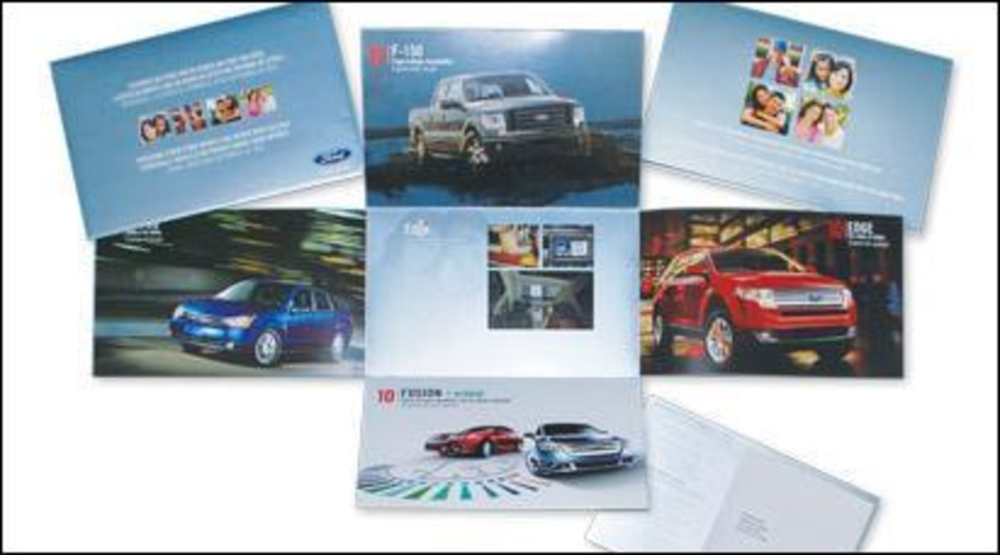Black, Hispanic and Asian-American consumers have a lot of buying power, and those numbers are only growing. Many marketers are incorporating multichannel marketing campaigns that target specific audiences to help attract consumers based on their cultural framework into their overall marketing plan.
“By understanding cultural subtleties and insights, marketers can develop data-driven, culture-based strategies and tactics for precisely targeted campaigns with messaging that appeals to these prospects and customers on both an emotional and rational level,” says Ricardo Quayat, executive creative director at Rauxa Direct’s Roja division.
Emerging channels such as social media and mobile are growing, and they offer a great way to connect with these different cutural groups.
“Mobile has tremendous potential in multicultural marketing,” says Karen Habib, director of Hispanic marketing and development at Eclipse Marketing Services. “Marketers are still struggling with how to monetize mobile marketing, but it is going to be integral in reaching different ethnic audiences in the future, as more people use their handheld devices for gaming, texting and streaming video.”
Digital channels are also great media brands can use to build these connections, but they need to be authentic and avoid cultural stereotypes, says D. Francis Coyne, senior planner at Burrell.
“Authenticity means remembering what your brand has a right to say and saying it in a way that is true to the DNA of your brand,” he says. “Marketers who attempt to simply hijack other cultures or cultural expressions many times appear inauthentic.”
In addition, marketers need to keep in mind other demographic details when reaching out to different ethnic groups. Advertisers need to remember that US Hispanics come from 22 different countries and have varying levels of acculturation, income and education, says Roy Eduardo Kokoyachuk, EVP of Garcia Research Associates.
“Direct, clear messages work best,” he says. “This doesn’t mean boring, it just means that care needs to be taken to ensure that the creative idea integrates well with and supports the key marketing message.”
Acquisition
Hennessy
To help promote the fourth year of its Hennessy Artistry concert series, Hennessy wanted to reach out to its core audience of 21- to 35-year-old black men in urban markets. Hennessy teamed up with multicultural agency Alloy Access to create a marketing campaign that included a mobile widget, social media and a sweepstakes.
“Our challenge was to bring this campaign to life through multiple touch points in an authentic and a dynamic way, so that this audience would respond,” says Tru Pettigrew, president of Alloy Access.
The campaign, called “The Art of Blending,” featured a downloadable widget for mobile phones and desktops. The widget included information on the artists who would perform at the concert series, as well as a sweepstakes to win a trip to see one of the concerts in New York. Users could personalize their location to receive information about local concerts and tasting events and win VIP points for interacting with the content.
Hennessy promoted the widget on its Facebook fan page, Web site and on partner radio station Web sites. The company felt that these channels would effectively reach its target audience, because black consumers spend significant time both with social media and mobile.
The campaign ran for eight weeks during September and October of 2009. Hennessy recorded 1.1 million total engagements with the widget. The company also gathered engagement metrics from the program, including opt-ins to use the widget, downloads, clicks on content within the widget and sweepstakes entries.
“This audience likes to interact and engage with social networks, and this consumer [demographic is a heavy user of mobile phones], so it was a great way to give them an opportunity to connect,” Pettigrew notes.
Acquisition and Retention
Ford
Ford wanted to increase its sales to Hispanics, and decided to test whether creating bilingual messaging would be more effective than sending marketing messages in English only. The car manufacturer worked with Zubi Advertising to create a direct mail campaign that tested English-only direct mail creative vs. direct mail creative with both English and Spanish messages.
“We see a shift to a strategy that requires cultural insights to win,” says Alberto Padron, director of integrated marketing at Zubi Advertising. “Simply carbon-copying your English-language mailer for multicultural markets won’t work.”
Both mailers included images of Ford vehicles with pictures of Latinos from various walks of life with whom the target audience could identify. Zubi took care to format the bilingual mailer so that it would be a clean read for consumers, despite the extra words on the page. The English-only mailer had a solid black background, while the bilingual mailer had a metallic blue and grey background.
Ford sent the mailer last August to 506,973 Hispanic households. Of that number, 127,252 were Ford owners and 379,721 were prospective customers. Half were sent mailers with only English copy and half were sent mailers with bilingual copy. All of the copy featured the Ford branding proposition.
“The message blended the brand attributes Ford is focusing on, including safety, quality, design and intelligence,” says Padron. “The mailer included a financial incentive to purchase.”
The direct mail piece offered $750 in cash on the purchase or lease of a new Ford vehicle. The culturally focused Hispanic mailer nearly doubled the incremental sales lift of the English-only creative.
“In this new day of tighter budgets, all marketers will work smarter, and the smartest ones are starting to realize that culturally informed marketing generates the most effective desired outcome,” adds Padron.







